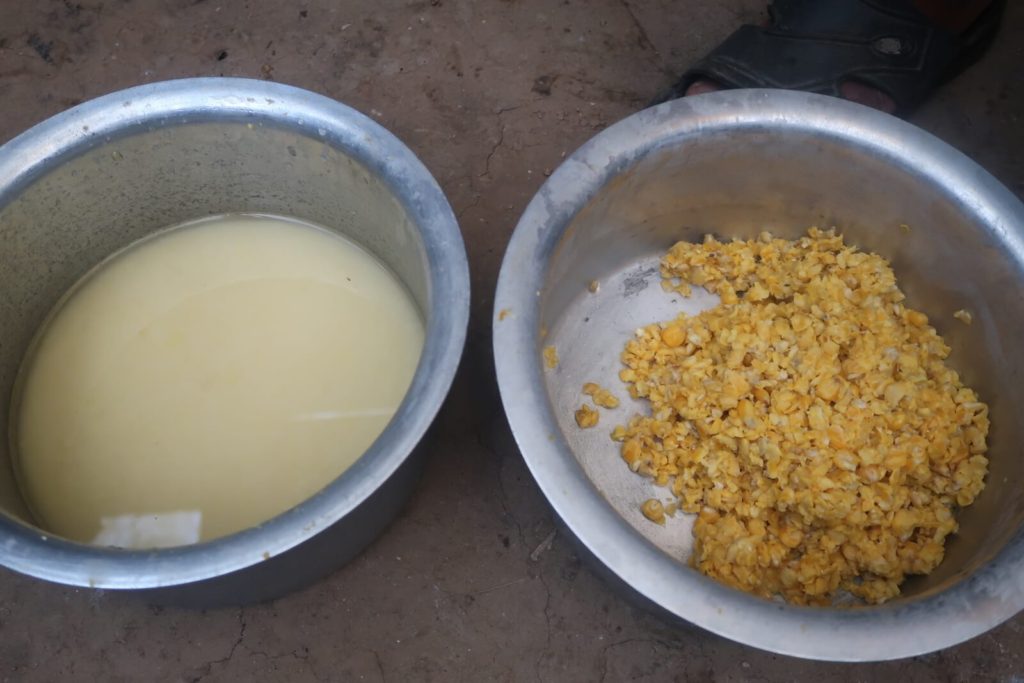Homemade Corn Beer Tutorial: Ingredients, Fermentation & Tips

Freshly tapped corn beer, also called chicha in the Andes and toddy in parts of Asia and Africa, is created by extracting sugars from maize through malting or salivary enzymes, then fermenting the sweet wort into a lightly effervescent beverage (1–4% ABV) in just a few hours WikipediaWikipedia. Longer fermentation (12–24 hrs) raises alcohol content toward 6–8% and yields a tangier profile; left even longer, it sours into palm vinegar–style acidity RedditAmerican Homebrewers Association. Corn beer’s storied history spans pre-Incan Peru (chicha de jora), West African palm toddies, and modern homebrewing adaptations—each culture adapting maize’s abundant starch into a communal libation WikipediaAmerican Homebrewers Association.
What Is Corn Beer?
Corn beer is a ferment made predominantly from maize (Zea mays), often produced by malting or chewing the grain to release starch-converting enzymes, boiling the resultant mash into a wort, and fermenting with wild or added yeasts WikipediaWikipedia. Known as chicha de jora in Peru, tuba or toddy in Asia and Africa, and asaana for non-alcoholic Ghanaian variants, corn beer varieties differ by processing method, adjuncts, and fermentation time WikipediaWikipedia.
Historical & Cultural Significance
Corn beer’s roots in the Andes date to pre-Incan times, where elite women brewed chicha de jora in earthen vats using malted jora maize Wikipedia. In West Africa and South Asia, palm-derived toddies coexist with maize chicha, reflecting regional palm species and fermentation traditions Reddit. Today, craft brewers re-explore maize’s role beyond adjuncts—demonstrating that artistic, flavorful beers can arise from corn in styles like cream ale and Latin American chicha Homebrewing Adventures.
Essential Ingredients & Equipment
Ingredients
- Maize (Corn): 100% for traditional chicha or up to 30% adjunct in modern recipes Reddit.
- Water: Clean, chlorine-free for mashing and fermentation.
- Enzymes: Naturally via malting or salivary ptyalin (for chicha), or commercial amylase if using raw corn Wikipedia.
- Yeast: Wild ambient yeasts suffice; baker’s or brewer’s yeast can standardize results American Homebrewers Association.
- Optional Adjuncts: Quinoa or sugar (chancaca) in Andean chicha; palm sugar for Ghanaian asaana Wikipedia.
Equipment
- Grain Mill or Mortar: To crush or grind corn Northern Brewer Forum.
- Large Pot & Thermometer: For mashing and boiling mash (if used).
- Fermentation Vessel: Wide-mouth jar or crock covered with cloth to keep out insects.
- Hydrometer (Optional): To gauge original and final gravity for ABV estimation Brew Your Own.
Step-by-Step Preparation
1. Malt or Prepare Corn
Malting: Soak corn 8–12 hrs, drain, germinate 4–5 days (sprouting), then dry and kilning to produce malted maize—releasing diastatic enzymes Wikipedia.
Traditional Chicha: Chew or use saliva-soaked loaves of corn, then shape into cakes and dry; ptyalin enzymes in saliva convert starch to sugar during soaking Wikipedia.
2. Mashing (if using malted corn)
- Mash Ratio: Mix malted corn with water at ~154 °F for 60 min to convert starch to fermentable sugars Brewer’s Friend.
- Sparge: Rinse grains with hot water to collect sweet wort.
3. Wort Preparation
- Boil (Optional): Boil wort briefly to sterilize and concentrate, especially for chicha de jora Wikipedia.
- Chilla/Afefena: For African palm version, skip mash—tap fresh sap, strain, and ferment directly.
4. Fermentation
- Primary: Transfer cooled wort or fresh sap into fermenter; cover with cloth and let ferment 2–4 hrs for low-ABV “nectar,” stirring occasionally RedditAmerican Homebrewers Association.
- Extended: 12–24 hrs for stronger, sour profile. Rack off sediment to secondary vessel for clarity (optional) American Homebrewers Association.
5. Conditioning & Bottling
- Sweet Corn Balance: Consume fresh (within 48 hrs) to enjoy mild effervescence; longer storage yields vinegar.
- Bottle Conditioning: Add a pinch of sugar and bottle for natural carbonation.
Variations & Regional Styles
- Andean Chicha de Jora: Germinated jora corn, boiled, then fermented in clay vats; often flavored with fruits or spices Wikipedia.
- Ghanaian Asaana: Non-alcoholic, caramelized corn drink; fermented 3 days, boiled, strained, and mixed with caramelized sugar Wikipedia.
- Palm Toddy: Fermented palm sap with no grain; 3–4% ABV in 2 hrs; a cousin to corn beer in tropical regions Reddit.
Tips & Troubleshooting
- Enzyme Activity: If using raw corn, add malted barley or commercial amylase—raw maize lacks sufficient diastatic power Homebrew Talk.
- Avoid Off-Flavors: Limit corn adjunct to ≤30% in mixed-malt beers to prevent solvent notes Reddit.
- Hygiene: Sanitize vessels and tools; wild sap ferments rapidly but can harbor unwanted microbes Northern Brewer Forum.
- Temperature Control: Aim for 20–28 °C; too warm accelerates spoilage, too cool stalls fermentation American Homebrewers Association.
Serving Suggestions
- Fresh & Chilled: Drink within hours for mild sparkle.
- Cocktail Base: Mix with fruit juices, herbs, or spices for innovative cocktails.
- Culinary Use: Use aged sour corn beer as marinade or “corn vinegar” in dressings.
Frequently Asked Questions
Q1: How alcoholic is corn beer?
Typically 3–4% ABV in 2–4 hrs; up to 6–8% after 12–24 hrs fermentation RedditAmerican Homebrewers Association.
Q2: Can I skip malting?
Yes—use cereal mash (cook raw corn with malted barley) or chicha chewing method to convert starch Northern Brewer Forum.
Q3: Why does my corn beer taste sour?
Extended fermentation produces acetic acid; shorten ferment or chill promptly to retain sweetness American Homebrewers Association.
Q4: Is corn beer gluten-free?
If made solely from maize and wild or baker’s yeast, yes—no gluten grains involved Wikipedia.



